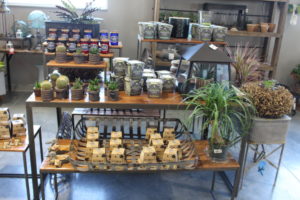Winter is for the birds
Why is it that people don’t think to feed birds until summer is a buzz with insects? Perhaps it’s that birds fly south for the winter… don’t they? This is the great myth that leaves millions of wild birds underfed during these cold months. It also makes window views into as many backyards devoid of wildlife at a time when it would be most appreciated.
At my Sierra Nevada Mountain home I was hard pressed to lure even a blue jay during the growing season. The abundance of rich plant and insect foods during the summer was far more attractive than my birdseed. But come the dreary cold days of winter, a cup of seed on the deck never fails to draw a dozen different species. There in front of my office window, I watch an all day party that keeps many small-feathered bodies well fed.
This illustrates why the real bird-feeding season is indeed during winter. House-bound customers will yearn for some way to connect with nature, and most are eager to interact with wildlife. Holiday shoppers are also on the lookout for just the right gift for their bird- and nature-loving friends. So the key to sales is to create displays that teach customers that bird needs are different in winter, and then suggest how best to meet these needs through a wide range of products.
Feeders
Seasonal strategies are different because inclement weather wrecks havoc with cheap or poorly designed summer feeders. Winter feeders must be highly weather resistant, particularly in the North. Promote those designed to protect the seed from snow, sleet and rain. Don’t overlook problematic drifting snow and wind-blown rain either.
Open platform feeders are less desirable in this season because of snow buildup on the unprotected surfaces. Those such as the Forever Feeder Fly Through offer a small platform covered by a limited roof structure.
Hanging hopper feeders mean fewer refill trips. When going out to refill requires heavy weather gear, a large, moisture-proof hopper proves far more convenient. This is an important tip for non-birding, gift-buying customers.
The Steel Magnum feeder, constructed wholly of metal, will not suffer the breakdown that inevitably afflicts wood and plastic exposed to extremes of climate. It also offers a large circular roof that protects birds while they feed. This roof is an important feature that makes feeding easier in inclement weather. For this reason, slick cylindrical feeders without any roofing may not be as desirable during this season.
Decorative metal outrigger hangers to mount feeders on walls are an important part of the hanging feeder assembly. Those well made with style will always display more attractively than more industrial utilitarian forms. Creative wrought iron can become more than functional, it offers a desirable artistic accent for architecture as well. Similarly, chains that are sufficiently heavy duty to stand up to winds should also be prominent. Ensure that customers considering gifts or first-time feeder buyers consider a hanger assembly with chain and hook that is strong enough for the products and location they choose.
Feeding
Winter bird food is different as well. Focus on blends high in oil-rich seeds and nuts compared to the standard summer mixes. Winter birds feed continually to consume enough calories during limited daylight hours to keep warm through long winter nights. Products with concentrations of raw shelled sunflower seeds and peanuts are staples.
Small birds have difficulty with larger nutmeats. An important component in the diet of small birds such as finches, chickadees and siskins is niger seed or thistle. Pure thistle should be grouped with net feeders, standard feeders suited to very small seed and seed blends designed for these tiny birds.
Another important food group are the suets, which are vital to the diets of larger birds such as cardinals and flickers. Suet, which is pure animal fat, is often augmented with nuts, grains, dried fruit and berries for a more balanced diet. Suet cakes require a specialized dispenser. Group these together to help customers obtain everything they need to get started.
Comfort
While birds do not bathe in winter the way they do in summer, they still need water. Where temperatures are so cold natural waterways are iced over, an electrically heated birdbath is often the only source for a sure draw. A universal electric de-icer can be retrofitted to an existing birdbath. These are ideal gift items but will also appeal to devoted birders looking to expand beyond food offerings.
Birdhouses are not often used in winter, but they are still appealing as gifts or for future use. Nesting boxes aren’t particularly attractive; they are designed to appeal to birds, not people. These are usually overlooked as gifts except by the most ardent birders who understand their value. However, novelty birdhouses add a whimsical touch to the display as garden art.
Learning
In order to educate customers and offer a broad gift shopping opportunity, include some books that are oriented to your regional bird populations. Field guides are essential to bird identification in your immediate area. National field guides tend to be too broad and discourage the novice bird lover. But smaller, more user-friendly field guides make great impulse buys and appeal to the more general wildlife lover.
A couple of how-to titles help customers better understand how all your bird-related products are used in the context of backyard habitat. Garden centers should consider stocking gardening titles that detail plants that lure birds to gardens as food and cover. Then you can create displays of bird-friendly plants during the upcoming growing season.
Birds are nature’s most ingenious insect-control mechanisms. They are not just a wildlife experience but a logical means to improve overall garden performance. Remember, birds that find a garden friendly in the winter are likely to start hanging around all year long.


















 Videos
Videos





